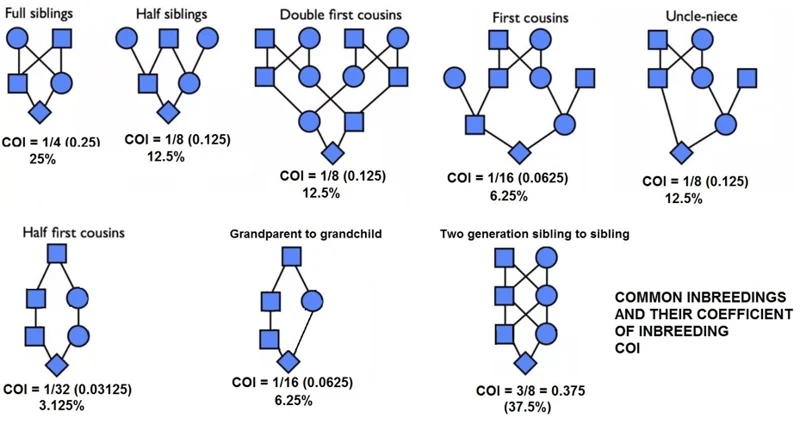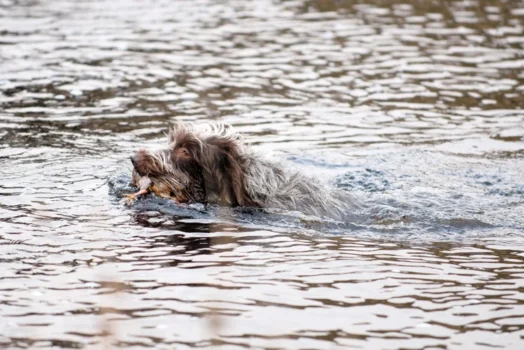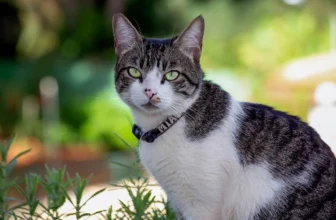As American Wirehairs become increasingly popular as pets and show animals, breeders face the challenge of maintaining the breed’s desirable traits while avoiding the negative outcomes of inbreeding and linebreeding. In this article, we will explore the risks associated with these breeding practices, including an increased likelihood of genetic disorders, reduced genetic diversity, and lowered immune system. We will also provide practical steps you can take to avoid inbreeding and linebreeding, such as genetic testing, finding unrelated mates and bringing in new bloodlines, so that you can make informed decisions as a breeder or pet owner. So buckle up, and let’s delve into the fascinating world of breeding American Wirehairs!
What is Inbreeding and Linebreeding?

When it comes to breeding American Wirehairs, it’s important to understand the concepts of inbreeding and linebreeding. These breeding methods are used to produce certain desired traits in kittens, but they also come with risks. Inbreeding involves breeding closely related cats within the same family, while linebreeding involves breeding cats that share a common ancestor. Let’s take a closer look at these breeding methods and their potential consequences.
Inbreeding
Inbreeding occurs when closely related cats are mated together, which can lead to several negative consequences. One of the main risks of inbreeding is the increased likelihood of genetic disorders. This can occur because certain genetic traits, including diseases, are more likely to be inherited when closely related cats are bred.
Inbreeding can also lead to reduced genetic diversity, which means there is a higher probability of breeding cats with genetic defects. Research shows that inbred cats have a higher probability of suffering from certain ailments, such as renal failure and heart disease, which can be inherited. This is because inbreeding encourages the inheritance of harmful genes present in both parents.
Inbreeding can result in a lowered immune system in offspring. When closely related cats are mated, the immune system of the offspring may be weaker, making them more susceptible to various diseases and infections.
To avoid inbreeding and minimize its risks, it’s important for breeders and cat owners to test their cats for genetic disorders before breeding. They can undergo various health tests, such as genetic testing, which can help identify any potential health concerns, reducing the risk of passing on harmful genes to offspring.
Breeders should also be careful when selecting breeding pairs by ensuring that they are not closely related. It’s crucial to consider the family tree of both parents to ensure there are no common ancestors between them. This could help reduce the risk of inbreeding and therefore genetic defects in offspring.
In addition to finding an unrelated mate, bringing in new bloodlines into a breeding program can help widen the gene pool, reducing the probability of producing offspring with genetic defects. By introducing new and unrelated cats into the breeding program, the genetic diversity can be increased, resulting in healthier offspring.
Inbreeding in American Wirehairs can have several negative consequences. It’s important for breeders and cat owners to be aware of these risks and take necessary precautions to minimize them. By performing genetic testing, finding an unrelated mate, and bringing in new bloodlines, the likelihood of inbreeding and its associated risks can be reduced.
Linebreeding
Linebreeding is a type of selective breeding that seeks to concentrate desirable traits by breeding closely related animals, but not as closely related as inbreeding. This type of breeding allows breeders to produce cats that possess certain physical and behavioral characteristics that are highly desired.
Linebreeding reduces genetic diversity and increases the likelihood of passing on a genetic disorder from a common ancestor. It involves mating cats with more distant relatives than inbreeding, but still involves mating related individuals. The common ancestor is usually farther back in the pedigree with linebreeding. However, since it relies on the same concept of inbreeding, linebreeding carries similar risks.
Linebreeding can prove harmful to American Wirehairs because it increases the risk of genetic disorders over time. Linebreeding minimally influences the gene pool of a breeding population in a much more restrained manner that, nevertheless, can result in a reduction of genetic variation over time. Cats bred using linebreeding techniques are at risk of producing offspring who may have recessive genetic disorders that may not be immediately evident but can manifest over time. This can lead to reduced fertility issues or even early mortality, which can be heartbreaking for a cat breeder and devastating for cat owners.
Some Wirehair breeders use linebreeding as a safer alternative to inbreeding. Still, the risks involved in linebreeding means that the breeder must be cautious and knowledgeable when choosing their breeding animals. Breeders should also consider genetic counseling to help minimize these risks.
It is crucial to have a well-crafted breeding program that practices safe and responsible breeding techniques. Breeders should perform thorough pre-breeding health tests to check for any genetic disorders in their breeding animals. They may also consider bringing in new bloodlines to the breeding program to increase genetic diversity and reduce inbreeding and linebreeding dangers. Maintaining accurate pedigree records is essential for tracking bloodlines and avoiding inbreeding and linebreeding practices accidentally.
Pre-breeding health tests will help breeders reduce genetic or inherited risks to the future offspring and ensure a healthy Wirehair. . For more information on genetic testing and pre-breeding health tests, refer to our article on /pre-breeding-health-tests-american-wirehairs/.
The Risks of Inbreeding and Linebreeding

As breeders, we always strive to improve the quality and standard of the American Wirehair cat breed. However, achieving this goal through inbreeding and linebreeding comes with some serious risks. Genetic disorders, reduced genetic diversity, and a weakened immune system are some of the dangers that can arise from breeding cats that are too closely related. In this section, we will explore the risks of inbreeding and linebreeding in American Wirehairs, and provide tips on how to avoid these issues.
Increased Risk of Genetic Disorders
Inbreeding and linebreeding can dramatically increase the risk of genetic disorders in the American Wirehair breed. This is due to the fact that when closely related cats are bred, they are more likely to pass down the same flawed genes to their offspring.
One of the most common genetic disorders that can result from inbreeding and linebreeding is hypertrophic cardiomyopathy (HCM). This is a heart condition that causes the walls of the heart to thicken, making it harder for the heart to pump blood and leading to heart failure. In a study conducted on the incidence of HCM in Maine Coon cats, a breed that is also prone to the disease, it was found that the prevalence of HCM was significantly higher in cats that were produced through inbreeding and linebreeding than those that were produced through outcrossing.
Another genetic disorder that can result from inbreeding and linebreeding is polycystic kidney disease (PKD). PKD is a condition where multiple cysts grow in the kidneys, eventually leading to kidney failure. This condition has been found to be more prevalent in Persians and Himalayans, but it can also affect American Wirehairs that have been produced through inbreeding and linebreeding.
Inbreeding and linebreeding can also increase the risk of other genetic disorders such as hip dysplasia, progressive retinal atrophy (PRA), and various skin diseases.
It’s important to note that not all cats produced through inbreeding and linebreeding will develop a genetic disorder, but the risk of doing so is significantly increased. That’s why it’s crucial for breeders to avoid inbreeding and linebreeding as much as possible when producing American Wirehairs.
To further prevent the risk of genetic disorders, breeders should also perform genetic testing on their cats to determine if they carry any faulty genes. By doing so, they can make informed breeding decisions and avoid breeding cats that carry genes that could lead to genetic disorders in their offspring. More information on genetic testing for breeding wirehairs can be found at genetic testing for breeding wirehairs.
The increased risk of genetic disorders is a significant danger of inbreeding and linebreeding in American Wirehairs. Breeders should take caution and avoid breeding closely related cats to maintain the health and welfare of the breed. To learn about different breeding pair tips for American Wirehairs, check out American Wirehair breeding pair tips.
Reduced Genetic Diversity
Inbreeding and linebreeding both increase the likelihood of reduced genetic diversity, which can have serious consequences for the health and well-being of American Wirehairs. When closely related cats are bred together, their offspring are more likely to inherit identical copies of the same genes, including harmful mutations. This can lead to a decrease in the overall genetic diversity of the breed.
Reduced genetic diversity can lead to:
| Health Problems | Inbreeding and linebreeding can increase the likelihood that a cat will inherit genetic disorders, such as heart disease, epilepsy, and respiratory issues. |
| Reduced Fertility | Cats bred through inbreeding or linebreeding may experience reduced fertility, which can make it more difficult for them to produce healthy offspring. |
| Less Robust Immune Systems | Cats with reduced genetic diversity may have a weakened immune system, making them more susceptible to diseases and infections. |
It is essential for breeders to ensure that they are maintaining the genetic diversity of the American Wirehair breed by carefully selecting mates that are not closely related. Additionally, bringing in new bloodlines periodically is crucial to safeguard against the potential damage caused by inbreeding and linebreeding. In the next section, we will discuss methods for avoiding inbreeding and linebreeding in more detail.
If you want to learn more about the impact of early socialization on the health and temperament of American Wirehair kittens, check out our article here.
Lowered Immune System
Inbreeding and linebreeding can also cause a lowered immune system in American Wirehairs. This occurs because the repeated breeding of closely related cats can cause certain genes, including those responsible for immune system function, to become homozygous or identical. As a result, the immune system is not as strong, which makes it difficult for the cats to fight off diseases and illnesses.
Here are a few ways this can happen:
- Increased exposure to disease: When cats have a lowered immune system, they are more susceptible to contracting diseases and illnesses. This can be especially dangerous in a closed breeding program where the same cats are repeatedly bred together.
- Higher risk of infections: A lowered immune system can also increase the risk of infections, such as respiratory infections and urinary tract infections. These types of infections can be difficult for cats to fight off and may require veterinary intervention.
- Lowered defense against parasites: A strong immune system is also important for fighting off parasites, such as fleas and ticks. When cats have a weakened immune system, they may be more likely to become infested and suffer from associated health problems.
It’s essential for breeders to understand the risks of inbreeding and linebreeding and take steps to prevent a lowered immune system in their American Wirehairs. By performing genetic testing, finding an unrelated mate, and bringing in new bloodlines, breeders can ensure that their cats have a genetically diverse background that contributes to a strong immune system. This can help prevent health problems that may occur as a result of inbreeding and linebreeding, and ensure the longevity and wellbeing of the cats.
How to Avoid Inbreeding and Linebreeding
As a responsible American Wirehair breeder, it’s crucial to take steps to avoid inbreeding and linebreeding. These breeding practices can lead to genetic issues and reduced genetic diversity in your breeding program. Fortunately, there are several ways to prevent inbreeding and linebreeding while still producing healthy and strong kittens. Let’s take a look at some of the strategies you can use to ensure the longevity and health of your American Wirehair breeding program.
Perform Genetic Testing
One way to avoid the risks of inbreeding and linebreeding in American Wirehairs is to perform genetic testing. Genetic testing can help identify any potential genetic abnormalities or disorders that may be passed down through breeding. By identifying these issues early on, breeders can make informed decisions about which cats to breed and which ones to avoid.
What is genetic testing?
Genetic testing is the process of analyzing an individual cat’s DNA to look for specific genetic mutations or variations that may indicate a higher risk of developing certain diseases or disorders. There are several different types of genetic tests that can be performed, depending on the specific conditions that the breeder is concerned about.
Why is genetic testing important?
Genetic testing can be an invaluable tool for breeders looking to avoid inbreeding and linebreeding. By screening potential mating pairs, breeders can identify any genetic issues that may be present and make informed decisions about whether or not to breed those individuals. This can help prevent the passing down of potentially harmful genetic mutations to future generations and reduce the risk of genetic disorders in the breed as a whole.
How is genetic testing performed?
Genetic testing is typically performed using a DNA sample from the cat in question. This sample may be taken using a cheek swab or a blood sample. The DNA is then analyzed in a laboratory using specialized equipment to look for specific genetic mutations or variations.
What tests should breeders consider?
There are a variety of genetic tests available for American Wirehairs, depending on the specific issues that the breeder is concerned about. Some potential tests to consider may include:
| Test | Description |
|---|---|
| HCM | A test for hypertrophic cardiomyopathy, a heart condition that can be inherited in American Wirehairs. |
| Pk Deficiency | A test for pyruvate kinase deficiency, a genetic disorder that affects red blood cell function. |
| SMA | A test for spinal muscular atrophy, a genetic disorder that can cause muscle weakness and atrophy. |
Conclusion:
Genetic testing can be an important tool for American Wirehair breeders looking to avoid the risks of inbreeding and linebreeding. By identifying potential genetic issues early on, breeders can make informed decisions about which cats to breed and help protect the health of the breed as a whole.
Find an Unrelated Mate
One effective way to avoid inbreeding and linebreeding in American Wirehairs is to find an unrelated mate for your cat. This means looking for a mate that is not closely related to your cat in their family tree. Here are some tips to help you find an unrelated mate for your American Wirehair:
- Research the Pedigree: Before breeding your American Wirehair, conduct a thorough research of their pedigree. This will help you identify any potential issues with inbreeding or linebreeding.
- Look for a Mate from Another Cattery: Another way to find an unrelated mate for your American Wirehair is to look outside of your cattery. Reach out to other breeders and catteries to find a mate for your cat.
- Attend Cat Shows: Attending cat shows is a great way to network with other breeders and find a mate for your American Wirehair. Chat with other breeders, observe their cats, and ask about their breeding practices.
- Consider Outcrossing: If finding an unrelated mate proves difficult, consider outcrossing your American Wirehair with another breed. This can help bring in new genes and prevent inbreeding and linebreeding.
Finding an unrelated mate for your American Wirehair may require some extra effort and research, but it’s important for maintaining the health and genetic diversity of the breed. By following these tips, you can help prevent the risks associated with inbreeding and linebreeding.
Bring in New Bloodlines
One way to avoid inbreeding and linebreeding in American Wirehairs is to bring in new bloodlines to the breeding program. This can be achieved by adding cats from outside of the current gene pool.
Benefits of Bringing in New Bloodlines:
- Increased genetic diversity
- Lower risk of genetic disorders
- Stronger immune systems
- Improved physical characteristics
By introducing cats from different bloodlines, you are increasing the genetic diversity of the breeding pool. This means that you are less likely to encounter genetic disorders that are common among specific bloodlines. Bringing in new cats can help strengthen the immune systems of the American Wirehairs in the breeding program, and lead to improved physical characteristics.
Considerations When Introducing New Bloodlines:
- Compatibility with existing cats
- Overall health and genetic background
- Temperament
Of course, you cannot simply add any cat to the breeding program. It is important to consider compatibility with existing cats, as well as the overall health and genetic background of the new addition. Temperament is also an important consideration, as you want cats that will get along well together and produce healthy kittens.
The Importance of a Breeding Program
In the end, the best way to avoid inbreeding and linebreeding is to have a well-thought-out breeding program in place. This program should take into account the genetic history of the breeding cats and their potential offspring. By carefully selecting breeding pairs and bringing in new bloodlines, breeders can improve the overall health and longevity of the American Wirehair breed.
Conclusion
In conclusion, it is crucial to understand the risks associated with inbreeding and linebreeding in American Wirehairs. These breeding practices increase the likelihood of genetic disorders, reduce genetic diversity, and lower the immune system’s effectiveness.
Fortunately, there are steps that breeders can take to prevent these risks. Genetic testing can identify potential health issues and help breeders make informed decisions about mating. Finding an unrelated mate can also help prevent inbreeding and linebreeding, as can bringing in new bloodlines through carefully planned breeding programs.
By taking these steps, breeders can help ensure the health and longevity of their American Wirehairs. It is important to prioritize the well-being of these cats over any desire for aesthetic traits or convenience. Strong, healthy bloodlines are essential for the continued vitality of the breed and the health of individual animals.
Overall, it is clear that inbreeding and linebreeding pose significant risks to American Wirehaired cats. Breeders and owners should take steps to prevent these breeding practices and prioritize genetic diversity and strong health in their animals. By doing so, they can ensure that the breed remains healthy and vibrant for generations to come.
Frequently Asked Questions
What are some common genetic disorders that can result from inbreeding or linebreeding in American Wirehairs?
Some common genetic disorders that can result from inbreeding or linebreeding in American Wirehairs include hip dysplasia, heart disease, and respiratory issues.
What is the difference between inbreeding and linebreeding?
Inbreeding involves mating closely related individuals within the same family line, while linebreeding involves mating individuals who are not as closely related but still share a common ancestor.
Why does inbreeding or linebreeding reduce genetic diversity?
Inbreeding or linebreeding reduces genetic diversity because it increases the likelihood of passing on the same harmful genetic mutations from both parents, leading to a higher prevalence of genetic disorders in the offspring.
How does inbreeding or linebreeding negatively impact the immune system of American Wirehairs?
Inbreeding or linebreeding can negatively impact the immune system of American Wirehairs by reducing the population of beneficial gut bacteria, which compromises their ability to fight off infections and may increase the risk of autoimmune disorders.
What are some signs of genetic disorders in American Wirehairs?
Some signs of genetic disorders in American Wirehairs include chronic health issues, abnormal growths, respiratory problems, and joint pain or lameness.
Can genetic disorders be prevented through genetic testing?
While genetic testing cannot prevent genetic disorders, it can identify animals that are carriers of harmful mutations and help to avoid breeding them with other carriers, reducing the likelihood of producing offspring with the disorder.
Is it possible to reverse the negative effects of inbreeding or linebreeding?
It is not possible to reverse the negative effects of inbreeding or linebreeding, but steps can be taken to reduce the prevalence of genetic disorders and improve the overall health of the breed.
Is outcrossing a viable solution to avoid inbreeding or linebreeding?
Outcrossing can be a viable solution to avoid inbreeding or linebreeding, but it should be done carefully and only with animals that have been extensively screened for genetic disorders to avoid introducing new problems into the bloodline.
Can inbreeding or linebreeding be beneficial in any way?
Inbreeding or linebreeding can be beneficial in certain circumstances, such as when it is used to “fix” desirable traits in a bloodline, but it should only be done under the guidance of a knowledgeable breeder and with careful consideration of the potential risks.
Should I avoid American Wirehairs that have been inbred or linebred?
It is not necessarily always best to avoid American Wirehairs that have been inbred or linebred, but it is important to do your research and make sure that the breeder is knowledgeable and responsible, and that any health issues have been carefully addressed.







